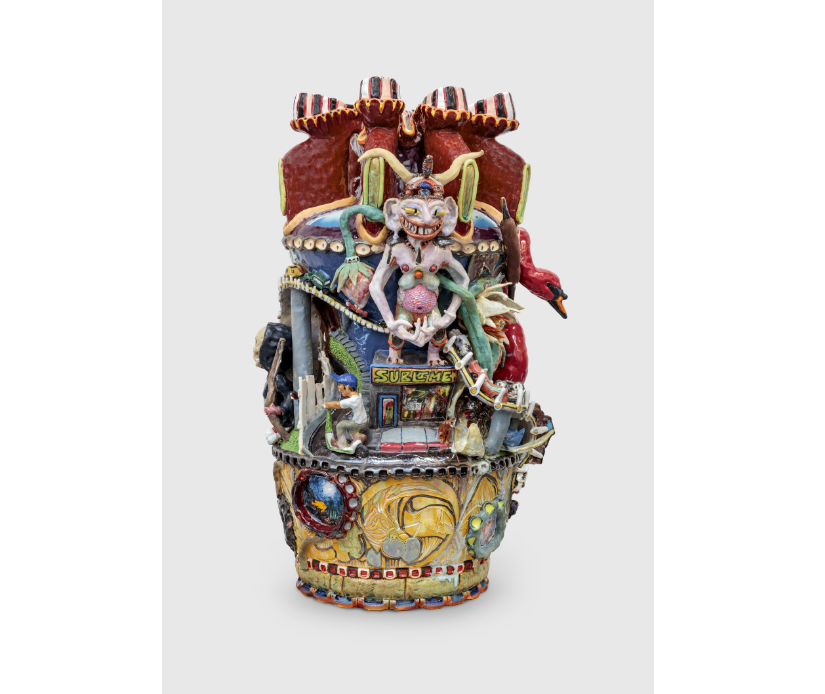SHARIF FARRAG: HYBRID MOMENTS
Jeffrey Deitch is delighted to present Hybrid Moments, Sharif Farrag’s first solo exhibition in New York.
March 8 – April 19, 2025
Farrag describes his experience as a “fourth dimension kid,” the child of a Syrian mother and an Egyptian father, absorbing both their Arab heritage and the pop culture that surrounded him. The title of the exhibition, Hybrid Moments, references both the title of a song by one of his favorite bands, The Misfits, and the hybridity that characterizes both his work and his personality. He also cites the influence of Homi K. Bhabha’s writings about hybrid identity.
Sharif Farrag’s work has been described as “nothing you have ever seen before.” His approach to ceramics is reminiscent of the freestyling in music like jazz and hip hop, an improvisational style that encompasses multiple references. His works are a diverse assemblage of historic and pop culture influences: patterns reminiscent of Islamic abstraction are juxtaposed with cartoon-like faces that peer out of crevices. Miniature cars and freeways wind around craggy mountains. There are ancient Egyptian gods, clocks, and regular appearances of the Pink Panther. Farrag breaks the symmetry generally associated with ceramic sculpture. His works are like exotic plants sprouting out of control. Art Nouveau, one of his influences, is crossed with the customization culture of the San Fernando Valley.
Farrag’s work draws the eye from all angles. Its complex composition needs to be seen from above and all the way around. Each work encompasses an immense tapestry of artistic decisions. Farrag’s work continues to reveal itself. There are hidden passages that emerge only after repeated viewings. The works are also infused with humor. Its craft and its fascinating assemblage of imagery inspires awe but is also designed to induce laughter. Farrag has a maximalist approach to his creations. He thinks of his compositions as “organized chaos.”
The work reflects his effort as a child of immigrants from the Arab diaspora to make art that fuses his family traditions with the vocabulary of European and American art. To quote Bhabha, it is “an art of the interstices.”


